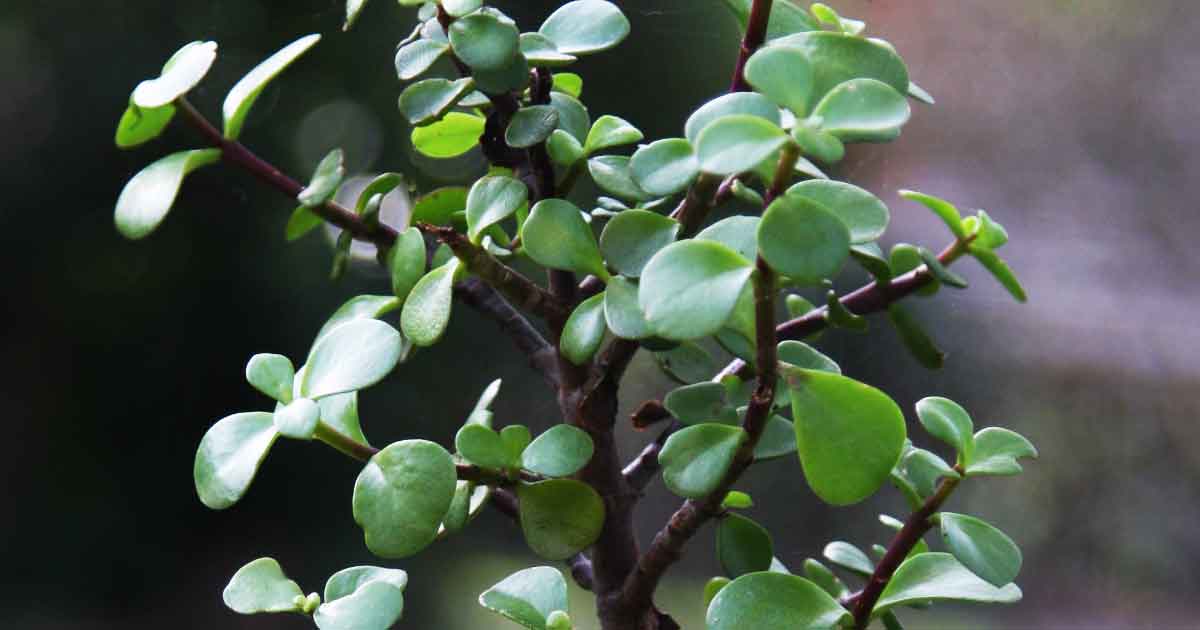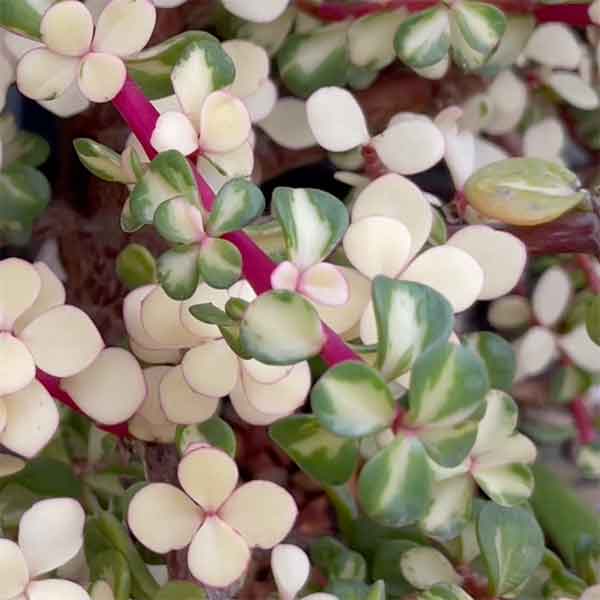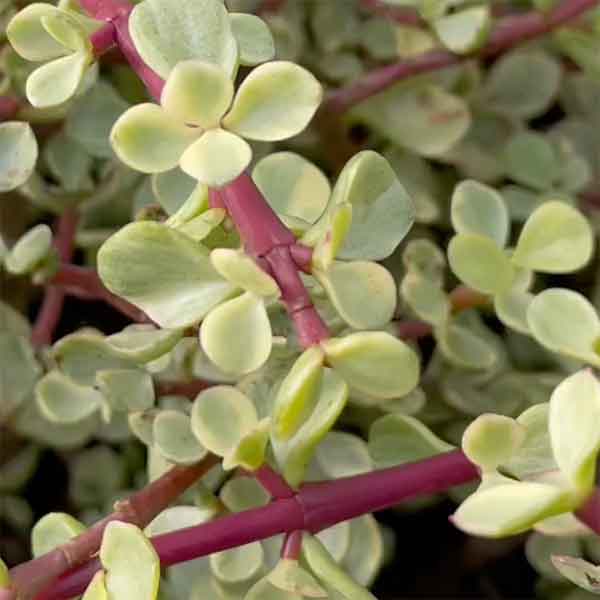The Elephant Bush

From South Africa Portulacaria Afra (Dwarf Jade) is widely grown as a potted plant and grows well outdoors in USDA Zones 10 – 11 and given the right conditions, it can be grown indoors in cooler zones.
It gets another common name of “Elephant Bush” because Elephants like to eat it. In its natural habitat it can grow to be a large bush and can easily reach 15ft (5m) in height. Grown in a container it usually reaches around 3 ft (1m), but is easily pruned to a smaller size.
Glossy green foliage on red stems make the new growth very attractive, however there are more varieties than the green foliage variety.
Elephant Bush Varieties

- A variegated version with cream and green foliage is popular.
- What is sometimes called a reverse variegation this variety has more cream than green.
- And also what is called ‘Silk Variegation’, with leaves that have a brushed look. Probably the rarest type at present.
- This is a different plant to Crassula Ovata which is the ‘Money Plant’ although sometimes sold as ‘Small Leafed Money Plant’
How to grow the Elephant Bush
Outdoors and growing in the ground in the right Zones its a very easy plant. Good drainage and a good amount of sun and it will thrive. Protection from very hot afternoon sun will keep it looking good year round.

Growing The Elephant Bush in Containers and Indoors
You will need a free draining potting mix, a specialist cactus and succulent potting mix will work. Or use a normal potting mix with 50% fine gravel and perlite mixed through.
Make sure the container has adequate drainage holes and keep the plant in a sunny position.
Watering
This is a plant that does not require frequent watering, water deeply and then allow the soil to dry out before watering again. Wet soggy soil will cause root rot and fungal problems.
Fertiliser
In containers a slow release organic fertiliser once a year at the recommended rate will be adequate.
Propagation
Easy from cuttings taken in spring.
- Take a cutting around 6 – 8 inches long just below a leaf node.
- Remove the leaves from the lower 1/3 of the stem.
- Like most succulent plants, it is recommended to leave the cutting to callus over for 3-4 days in a seed position.
- Plant into your potting mix and water in after 7 days.
- You can take larger cuttings if you wish.
- Keep cuttings in a warm position

